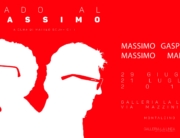Barbieri, Cestari and Gasperini are the three artists who dedicated their entire lives to the representation of the city.
A city which they investigated thoroughly, each one according to his own personal research and history, and which they expressed pictorially and graphically in the most varied approaches possible yet always with the ultimate aim of understanding its intimate essence.
Forget everything, or at least almost everything, as this exhibition named “Antithesis”, overturns completely the perspectives’ and the certainties of both the authors and their observers, in order to catapult them into an unexplored dimension: that of the rural countryside and the natural landscape.
The individual paths along which the three authors reach this specific juxtaposition are all inevitably very different from each other, but they all focus on incentives, questions and needs that we will discover, are absolutely complementary.
Francesco Barbieri feels that researching a rural landscape, its symbology and its aesthetic are fully complementary to his research on cities, since it is a real “representation through negation”: painting open and closed spaces in order to identify full spaces.
In fact, if the urban and metropolitan system is intended as the ultimate human contemporary experience (its symbology represents the present social and economic system), it appears inevitably in crisis (due to pollution, overbuilding, individual alienation and marginality) and it leads us to look for alternative experiences, social models of a distant past, which has an utopian value. By natural contrast this leads the rural context to become idealized when instead, in actual fact, it is the countryside itself that has changed, partly eroded and damaged from the very same metropolitan, ever ready to engulf rural areas at the borders of the suburbs or to pollute the agricultural economy with its industrial logic.
Daniele Cestari instead describes the rural landscape as if it was a city itself: in his works, nature itself becomes “architecture”. The mountains – like symbolic concrete flow – become buildings and all his paintings are real and actual descriptions of nature’s architecture: they are “natural cities”. The sky becomes the supreme director of a landscape that is constantly taking shape, where any human presence vanishes almost completely.
Lastly, Massimo Gasperini focuses his attention on the concepts of “limit” and “margin”, of the “known” and “unknown”.
According to the author, the word “countryside” is often employed to identify a natural landscape, one almost completely erased from our planet. The anthropic landscape, of which the cultural component prevaricates on the natural one, prevails over the countryside, seizing its basic structures, transforming them and making them no longer functional for the survival of the local organism.
The “continuous city” has moved forward inexorably, increasing its margins and swallowing up the free space, according to the theory of an ever expanding consumption of the land.
The series of works presented in this exhibition by the author aim to explore the conceptual dimension of the margin, intended as the border between these two systems: city and countryside counteract according to the terms of addition (the city that stratifies and embeds upon the countryside), of subtraction (the city which deprives the countryside of its vital territory) and of figuration (artifice against nature).
The general and abstract visions, where the urban landscape and the natural landscape alternate, on the edge of contrasts and dissonances, on the paradox of confronting macro-shapes, define themselves progressively as the optical axis line gains ground.
This approach coincides with the dominion of natural elements over artificial ones, which dematerialize themselves until becoming a reflex or a memory of a pre-existence or existence.
Gasperini works on margins because the margin is where the limit between the two different and opposite realities meet. Between the known and the unknown.
Against this – silent – backdrop, the inevitable contrast with the great paintings of the past, as facing the rural landscape, also and above all, means confronting art history itself and rising to meet the challenge of articulating ourselves in a contemporary and current form on this fundamental subject, with all the respect it deserves, yet no longer considering it a taboo.
The exhibition is curated by Matteo Scuffiotti
from 2 June to 24, 2018.
Galleria La Linea – Via Mazzini 21, Montalcino (SI)







